What’s Holding You Back?
You’ve organized notes, stayed up late, and highlighted every key line. Yet when exam day arrives, the facts slip through your mind. You think: “Why am I not getting the grades I want? How to be good in studies?” You’re not the only one. Countless students rely on methods that feel useful rereading, copying flashcards while scrolling through social media, or cramming overnight, but those approaches deliver little long‑term learning. That’s why learning the 3 Secret Study Tips can completely change the way you prepare, helping you study smarter, not just harder.
The Hidden Cost of Old Habits
Even though you spend hours at your desk, science shows you remember only about 12 percent of what you passively review. Within two days, most of that vanishes. When you reread notes or highlight text, you trick your brain into thinking you know the material. That false confidence leaves you underprepared and stressed. Cramming floods short‑term memory. In 48 hours, you lose up to 60 percent of what you crammed in, leaving you no better off than before.
Your Path to Secret Success
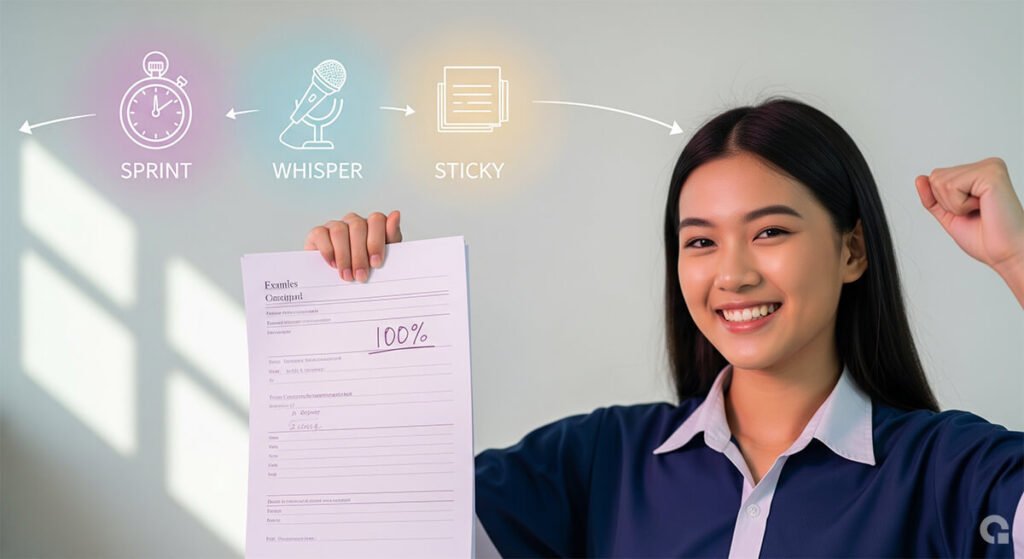
You don’t need to study harder. You need to study smarter and sometimes more quietly. In this guide on how to study secretly, you will discover:
- 7 Secret Methods for Studying You Can Use Anywhere.
- 3 Secret Study Tips that combine these methods for maximum effect.
- How to use these tips to score the highest in the exam without drawing attention.
Each section follows the PAS framework, addressing your problem, digging into why old habits fail, and offering a clear, step‑by‑step solution.
7 Secret Methods for Studying
Before you learn the three game‑changing tips, build your toolkit with these 7 secret methods for studying. Each method works in public or private, at home or on the go.
1. The Covert Pomodoro
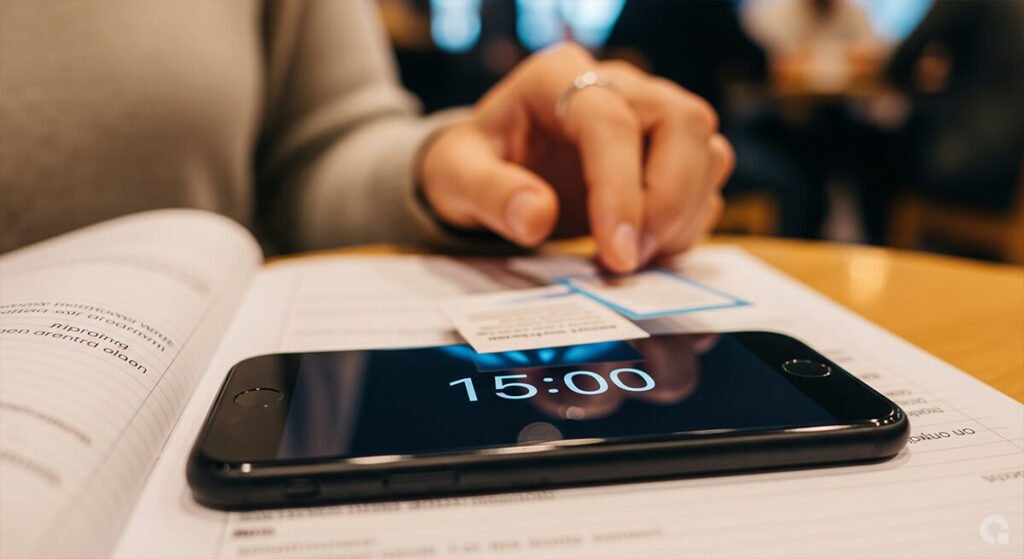
What it is: A time‑blocking technique: 25 min focus, 5 min break, repeated.
How to use it secretly:
- Install a silent timer app and switch it to vibrate only.
- Keep your phone face down under your notebook.
- During breaks, do small stretches or deep breaths without leaving your seat.
Why it works: Short, intense bursts of focus prevent distraction. Silent breaks keep your routine private.
2. Undercover Flashcards

What it is: Flashcards for quick recall in short bursts.
How to use it secretly:
- Make mini flashcards no larger than a credit card.
- Slip them into a pocket or behind your phone case.
- Pull one out between classes or while waiting in line.
Why it works: Spaced repetition in bite‑sized doses keeps information fresh all day without bulky materials.
3. Discreet Dual Coding

What it is: Combine verbal and visual cues.
How to use it secretly:
- Draw tiny symbols or icons in the margins of your notes instead of full diagrams.
- Use a single colored pen to mark key terms next to definitions.
Why it works: Even minimal visuals help your brain form stronger memory links, and small doodles don’t draw attention.
4. Silent Self‑Quizzing
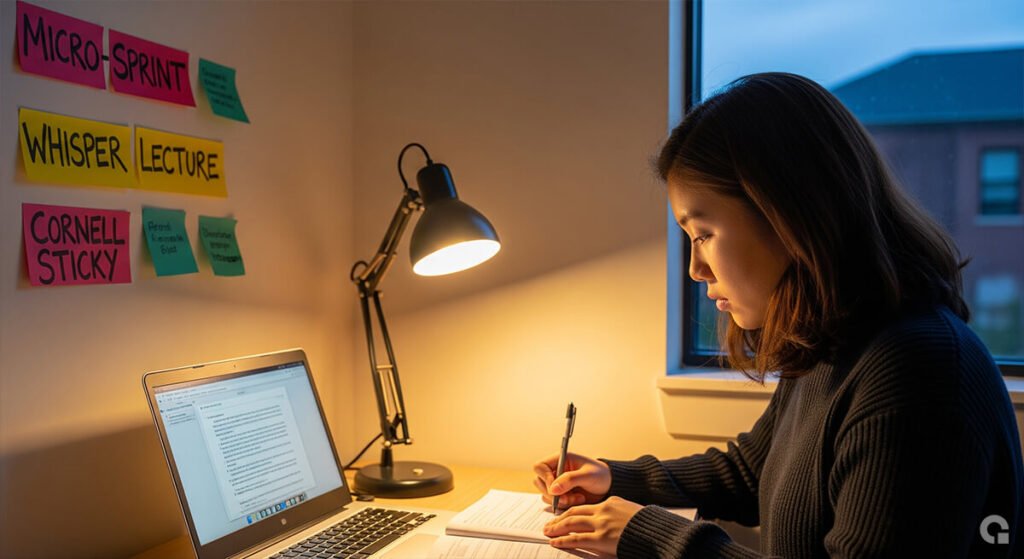
What it is: Test yourself mentally rather than aloud.
How to use it secretly:
- After reading a section, cover your notes and recall key points in your mind.
- Predict answers silently before you look at the text again.
Why it works: Active recall strengthens memory; doing it in your head keeps your study topics private.
5. Covert Mind Mapping
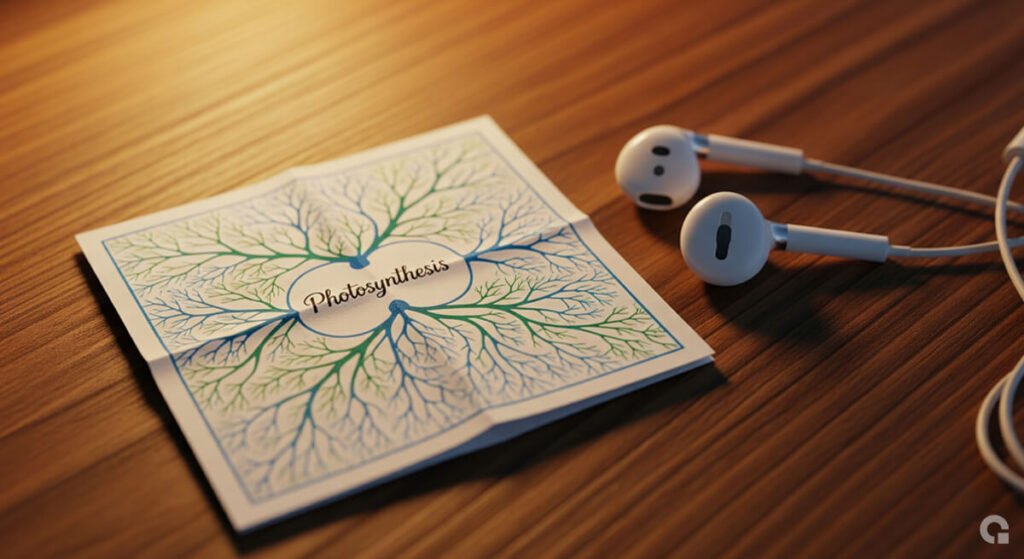
What it is: A visual map connecting ideas.
How to use it secretly:
- Fold a small piece of paper into quarters.
- In one quadrant, write the central topic and add branches into the margins.
- Keep the map as small as a smartphone screen.
Why it works: Seeing connections boosts understanding; mini maps fit anywhere.
6. The Whisper Lecture

What it is: Teach the material in a low voice or whisper.
How to use it secretly:
- Record 30‑second audio clips at a whisper volume.
- Play them back through one earbud on low volume.
Why it works: Teaching forces you to organize thoughts; whispering keeps it discreet.
7. Stealthy Environment Engineering

What it is: Shape your study space to reduce noise and distraction.
How to use it secretly:
- Use brown or white noise on a single earbud.
- Choose a seat facing a blank wall or window.
- Keep your phone in airplane mode with notifications off.
Why it works: You create a focused zone around you without making it obvious to others.
3 Secret Study Tips
Now that you have your toolkit, let’s combine methods into 3 secret study tips. These tips show you how to study secretly and effectively enough to score highest in exam.
Secret Tip 1: The Micro‑Study Sprint
Core Methods: Covert Pomodoro + Silent Self‑Quizzing + Undercover Flashcards
Steps:
- Pick a Narrow Topic (e.g., a single formula or date).
- Set a Silent Timer to 15 minutes (micro‑Pomodoro).
- Study Sprint: Quiz yourself silently on that topic, using mini flashcards only if needed.
- Self‑Check: When the timer vibrates, glance at notes or flashcards to confirm answers.
- Mini‑Break: Do two minutes of light stretching or deep breathing.
Why it works:
- You force active recall on a single topic, strengthening memory.
- Short sprints maintain energy.
- Micro flashcards and silent self‑quizzing keep your study invisible.
3 Secret Study Tips to Score Highest in Exam begin with focused, repeatable routines. Use the Micro‑Study Sprint for each key point you need to master.
Secret Tip 2: The Whisper Lecture Cycle
Core Methods: Whisper Lecture + Discreet Dual Coding + Spaced Repetition
Steps:
- Whisper Lecture (2 min): In a low voice or in your head, teach the concept back to yourself.
- Dual Code Quick‑Draw (1 min): On a tiny sticky note or margin, sketch one simple icon or phrase that captures the concept.
- Spaced Review: Return to that note or recording after 30 minutes and again after 24 hours.
Why it works:
- Teaching reveals gaps.
- A minimal visual cue reinforces the lesson.
- Spaced reviews cement the learning over time.
These 7 secret methods for studying combine here to form a cycle that you can repeat quietly throughout the day.
Secret Tip 3: The Covert Cornell Sticky

Core Methods: Stealthy Environment + Cornell Note Structure + Silent Self‑Quizzing
Steps:
- Create a Sticky Note with three sections:
- Cue Column: A question or keyword on the left.
- Notes Column: Bullet points of the answer on the right.
- Summary: One line at the bottom capturing the main idea.
- Carry It With You: Slip the note inside a notebook cover or pocket.
- Review Whenever Possible: Quietly glance at cues and recall the answers, then check the bullets.
- Update Daily: Make a new sticky note for each major topic.
Why it works:
- Cornell structure guides you to ask questions and summarize.
- Stickies are portable and discreet.
- Frequent self‑quizzing drives recall.
Combine these 3 secret study tips, sprints, whisper lectures, and Cornell stickies—to build a full, private study routine that boosts retention and confidence.
Looking for more proven study strategies? – How to Be Good in Studies Don’t miss it!
Building Your Secret Study Session
Follow this step‑by‑step plan to put it all together in a 90‑minute block:
| Time | Activity | Tip/Method |
|---|---|---|
| 0:00–0:15 | Micro‑Study Sprint (Topic A) | Secret Tip 1 |
| 0:15–0:17 | Mini‑Break: Stretch & Deep Breaths | Pomodoro (silent) |
| 0:17–0:22 | Whisper Lecture + Dual Code Quick‑Draw (Topic A) | Secret Tip 2 |
| 0:22–0:27 | Micro‑Study Sprint (Topic B) | Secret Tip 1 |
| 0:27–0:29 | Mini‑Break | |
| 0:29–0:34 | Whisper Lecture + Dual Code Quick‑Draw (Topic B) | Secret Tip 2 |
| 0:34–0:39 | Micro‑Study Sprint (Topic C) | Secret Tip 1 |
| 0:39–0:41 | Mini‑Break | |
| 0:41–0:46 | Create Cornell Sticky Notes for A, B, and C | Secret Tip 3 |
| 0:46–0:51 | Quick Review of Sticky Notes (Cue ➔ Recall ➔ Check) | Silent Self‑Quizzing |
| 0:51–0:90 | Spaced Return: Revisit Sprints A, B, C in mini‑bursts | Pomodoro + Spaced Replication |
Repeat this block twice a day or adjust based on your schedule.
👉 Want a full schedule? Check our detailed guide on the Best Study Time Table for students of every class.
Troubleshooting Common Challenges
- I get distracted by notifications.
Put your phone in airplane mode or silent with no vibration. Keep it out of sight. - I forgot to do spaced reviews.
Set a single daily alarm on vibrate only. Use a calendar reminder on your watch or phone. - I feel awkward whispering.
Whisper in your mind instead of your throat. If you must speak, keep your lips almost closed to muffle sound.
Your Secret Path to Top Grades
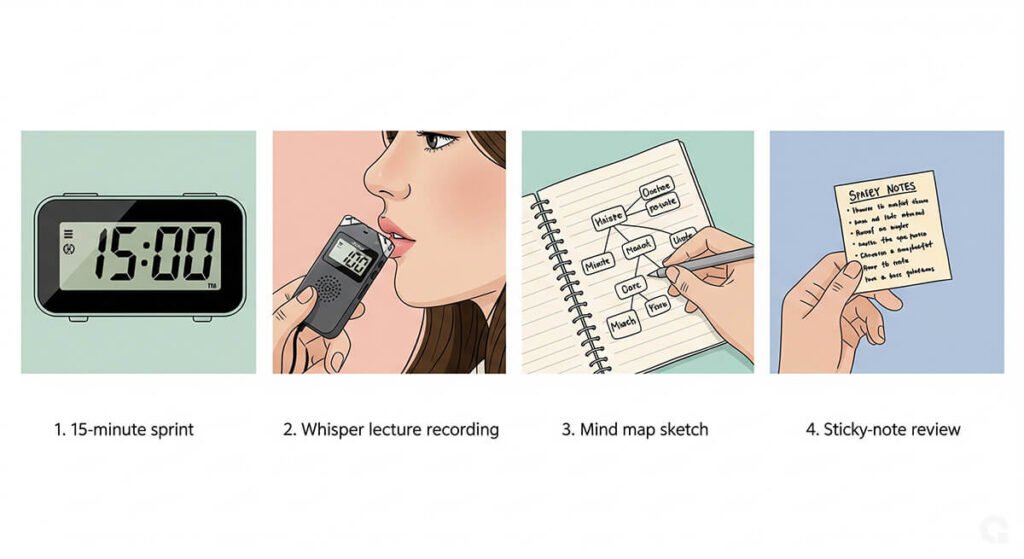
You now know how to study secretly using 7 secret methods for studying and the 3 secret study tips that top achievers use to score highest in exams. You’ve seen how to combine micro‑sprints, whisper lectures, and Cornell stickies into a repeatable, private routine.
Next Steps:
- Choose one secret tip and try it today for 15 minutes.
- Add your mini sticky reviews to your routine.
- Track your recall success over a week.
Studying secretly isn’t about hiding; it’s about making every minute count without the noise. Start now, stay consistent, and watch your grades rise. Good luck!
FAQs: How to Study Secretly & Score Highest in Exam
How can I study secretly?
Use pocket‑sized tools and mental techniques: mini flashcards, whisper lectures in your head, tiny mind maps on sticky notes, and single‑earbud noise masking. All methods rely on internal recall or discrete, credit–card–sized materials, so you can study anywhere without drawing attention.
What is the 1/3, 5/7 rule in studying?
This rule divides your review time into phases:
1. 1/3 of sessions focus on new material (learning).
2. 5/7 of your daily sessions are spaced reviews of previously learned content.
3. This balance ensures you keep adding fresh knowledge while reinforcing older topics right before you’d normally forget them.
How to be a top 1% student?
Master the core principles: Active recall, spaced repetition, interleaving.
Optimize your routine: Use micro‑sprints, whisper lectures, Cornell stickies.
Track & adapt: Log your progress, analyze mistakes in a journal, and refine your methods weekly.
Prioritize self‑care: Consistent sleep, nutrition, exercise, and strategic breaks keep your mind sharp.
How to study 8 hours per day?
Break into sprints: Eight 1‑hour blocks split into 45 min focus + 15 min active break.
Rotate subjects: Use interleaving to switch topics, keeping your brain fresh.
Build in micro‑reviews: During breaks, silently quiz yourself on flashcards or Cornell stickies.
Batch self‑care: Schedule meals, hydration, and short walks between blocks to sustain energy.
How can I study in a public place without anyone noticing?
Use mini flashcards, whisper lectures in your head, tiny mind maps, and single‑earbud noise masking. All methods rely on mental effort or pocket‑sized materials.
How often should I use these secret tips?
Aim for 3–5 sprints per subject per week. Create daily sticky‑note reviews and replay your whisper lectures at spaced intervals.
What if I miss a spaced review session?
It’s okay. Spaced repetition is flexible; resume the schedule at your next free moment. The key is regular, not perfect, reviews.
Will these methods work if I have a tight schedule?
Yes. Each sprint is only 15 minutes, and stickies take seconds to review. Even busy students can fit multiple sprints into short breaks.


















